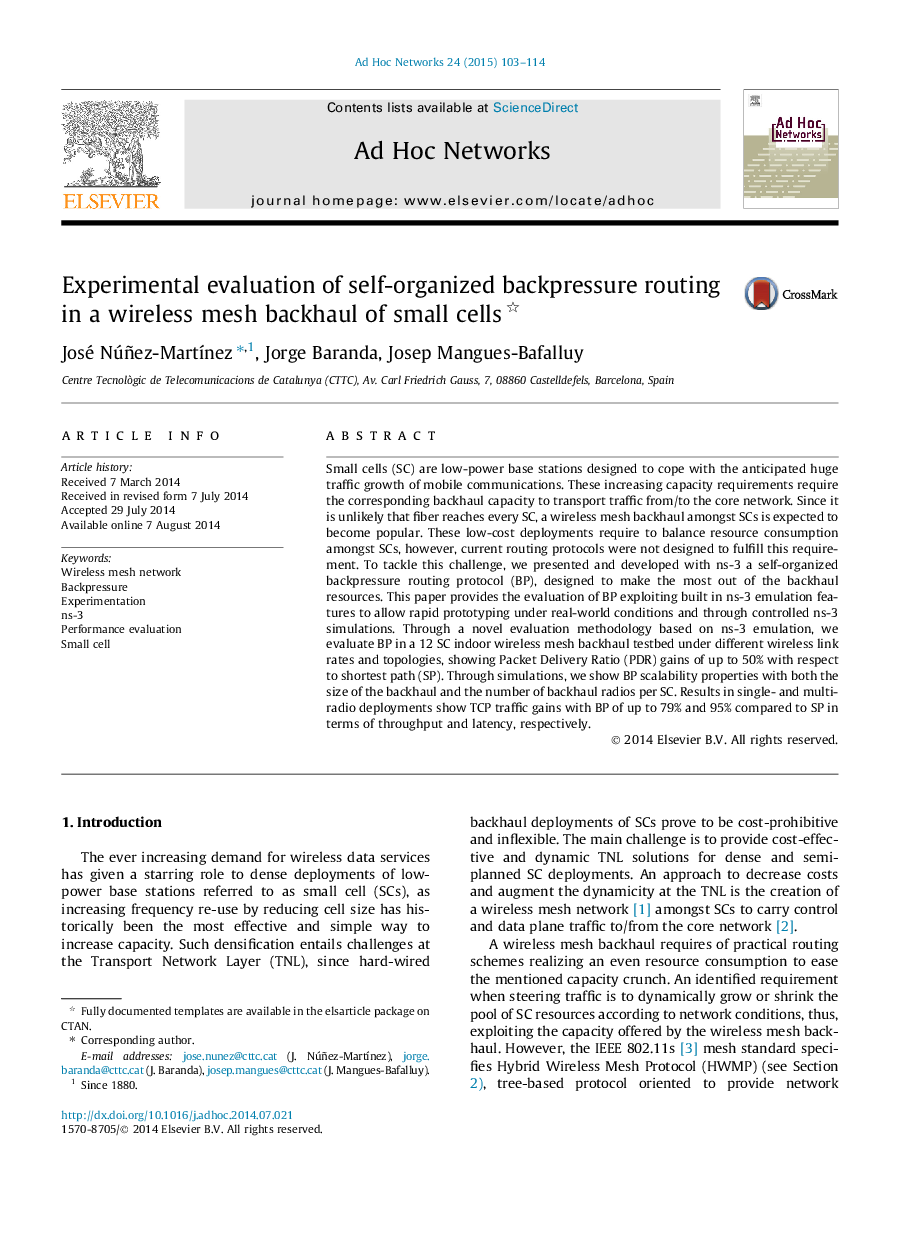| Article ID | Journal | Published Year | Pages | File Type |
|---|---|---|---|---|
| 445701 | Ad Hoc Networks | 2015 | 12 Pages |
Small cells (SC) are low-power base stations designed to cope with the anticipated huge traffic growth of mobile communications. These increasing capacity requirements require the corresponding backhaul capacity to transport traffic from/to the core network. Since it is unlikely that fiber reaches every SC, a wireless mesh backhaul amongst SCs is expected to become popular. These low-cost deployments require to balance resource consumption amongst SCs, however, current routing protocols were not designed to fulfill this requirement. To tackle this challenge, we presented and developed with ns-3 a self-organized backpressure routing protocol (BP), designed to make the most out of the backhaul resources. This paper provides the evaluation of BP exploiting built in ns-3 emulation features to allow rapid prototyping under real-world conditions and through controlled ns-3 simulations. Through a novel evaluation methodology based on ns-3 emulation, we evaluate BP in a 12 SC indoor wireless mesh backhaul testbed under different wireless link rates and topologies, showing Packet Delivery Ratio (PDR) gains of up to 50% with respect to shortest path (SP). Through simulations, we show BP scalability properties with both the size of the backhaul and the number of backhaul radios per SC. Results in single- and multi-radio deployments show TCP traffic gains with BP of up to 79% and 95% compared to SP in terms of throughput and latency, respectively.
